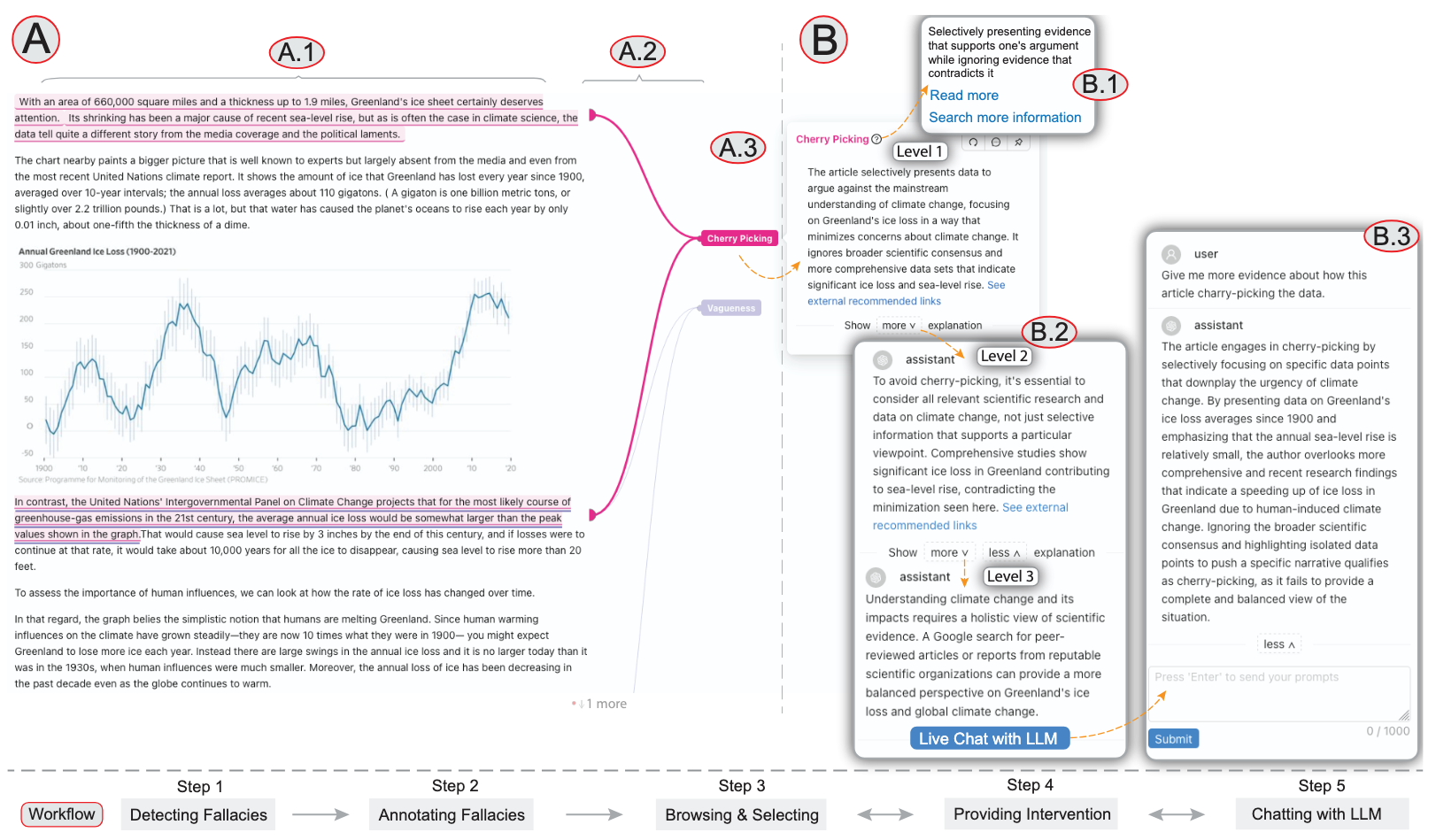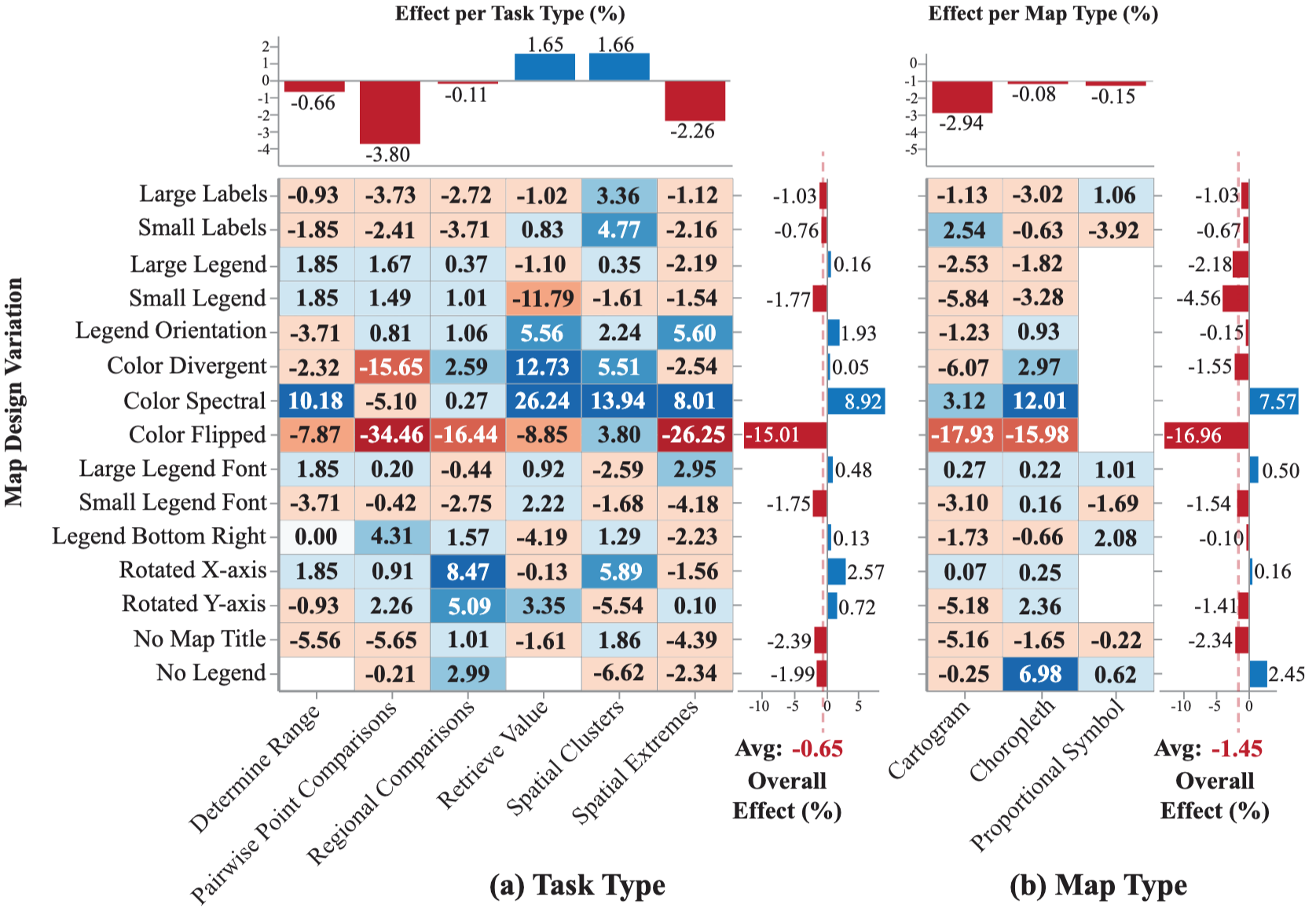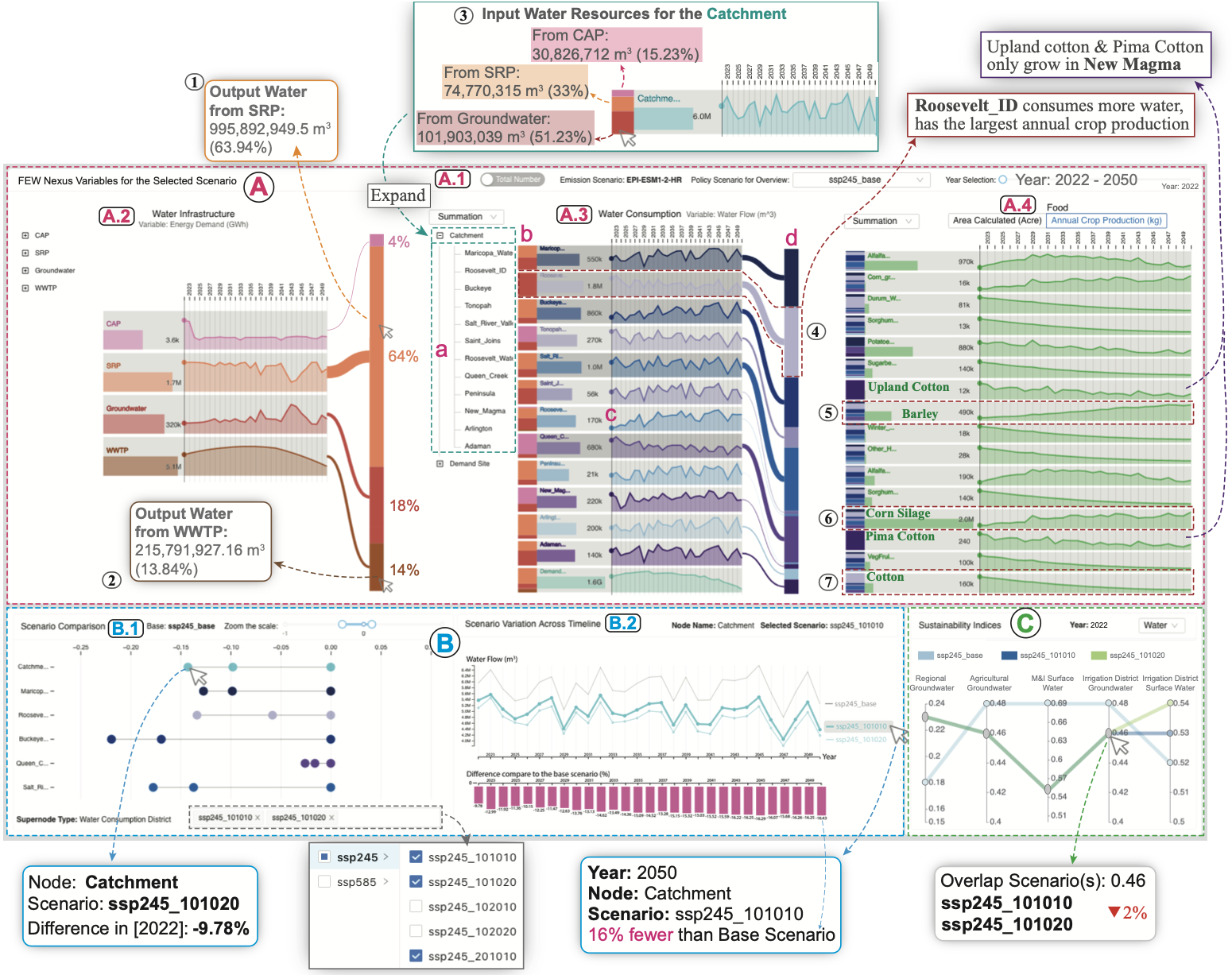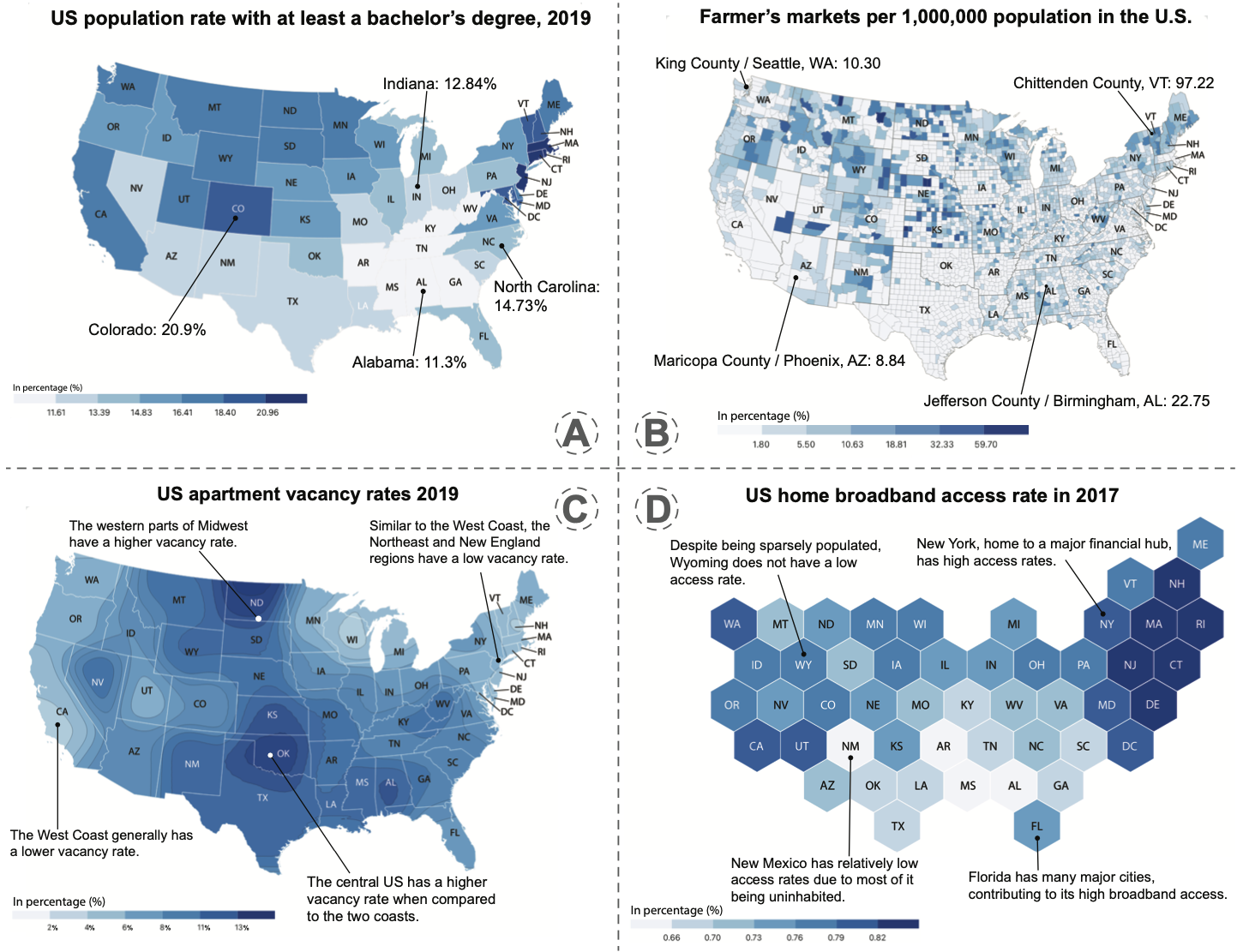
 Postdoctoral Fellow at VADER Lab, SCAI, Arizona State University
Postdoctoral Fellow at VADER Lab, SCAI, Arizona State University Postdoctoral Fellow at WVisdom, School of Computer Science, University of Waterloo (starts on Oct. 1, 2025)
Postdoctoral Fellow at WVisdom, School of Computer Science, University of Waterloo (starts on Oct. 1, 2025)I am a data visualization researcher currently working as a Postdoctoral Research Scholar supervised by Dr. Ross Maciejewski. My research focuses on visual analytics, geospatial visualization, model explanation, and information visualization. I also have general interests on HCI, NLP, and information perception. I will start my Postdoctoral Research Fellow journey supervised by Dr. Jian Zhao at School of Computer Science, University of Waterloo on October 1st, 2025.
I am also a long-term full-stack developer specializing in web-based applications. Before joining the VADER Lab, I worked for five years as a software engineer in industrial companies.

Action required
Problem: The current root path of this site is "baseurl ("_config.yml.
Solution: Please set the
baseurl in _config.yml to "Warning
Problem: The name of your GitHub Pages repository ("Solution: Please consider renaming the repository to "
{% include widgets/url_debug_message.html %}" in index.html.
Selected Publications (view all )

Skeptik: A Hybrid Framework for Combating Potential Misinformation in Journalism
Arlen Fan*, Fan Lei*, Steven R. Corman, Ross Maciejewski (* equal contribution)
ACM Transactions on Interactive Intelligent Systems (TiiS), to appear 2025
The proliferation of misinformation in journalism, often stemming from flawed reasoning and logical fallacies, poses significant challenges to public understanding and trust in news media. Traditional fact-checking methods, while valuable, are insufficient for detecting the subtle logical inconsistencies that can mislead readers within seemingly factual content. To address this gap, we introduce Skeptik, a hybrid framework that integrates Large Language Models (LLMs) with heuristic approaches to analyze and annotate potential logical fallacies and reasoning errors in online news articles. Operating as a web browser extension, Skeptik automatically highlights sentences that may contain logical fallacies, provides detailed explanations, and offers multi-layered interventions to help readers critically assess the information presented. The system is designed to be extensible, accommodating a wide range of fallacy types and adapting to evolving misinformation tactics. Through comprehensive case studies, quantitative analyses, usability experiments, and expert evaluations, we demonstrate the effectiveness of Skeptik in enhancing readers' critical examination of news content and promoting media literacy. Our contributions include the development of an expandable classification system for logical fallacies, the innovative integration of LLMs for real-time analysis and annotation, and the creation of an interactive user interface that fosters user engagement and close reading. By emphasizing the logical integrity of textual content rather than relying solely on factual accuracy, Skeptik offers a comprehensive solution to combat potential misinformation in journalism. Ultimately, our framework aims to improve critical reading and protect the public from deceptive information online and enhance the overall credibility of news media.
Skeptik: A Hybrid Framework for Combating Potential Misinformation in Journalism
Arlen Fan*, Fan Lei*, Steven R. Corman, Ross Maciejewski (* equal contribution)
ACM Transactions on Interactive Intelligent Systems (TiiS), to appear 2025
The proliferation of misinformation in journalism, often stemming from flawed reasoning and logical fallacies, poses significant challenges to public understanding and trust in news media. Traditional fact-checking methods, while valuable, are insufficient for detecting the subtle logical inconsistencies that can mislead readers within seemingly factual content. To address this gap, we introduce Skeptik, a hybrid framework that integrates Large Language Models (LLMs) with heuristic approaches to analyze and annotate potential logical fallacies and reasoning errors in online news articles. Operating as a web browser extension, Skeptik automatically highlights sentences that may contain logical fallacies, provides detailed explanations, and offers multi-layered interventions to help readers critically assess the information presented. The system is designed to be extensible, accommodating a wide range of fallacy types and adapting to evolving misinformation tactics. Through comprehensive case studies, quantitative analyses, usability experiments, and expert evaluations, we demonstrate the effectiveness of Skeptik in enhancing readers' critical examination of news content and promoting media literacy. Our contributions include the development of an expandable classification system for logical fallacies, the innovative integration of LLMs for real-time analysis and annotation, and the creation of an interactive user interface that fosters user engagement and close reading. By emphasizing the logical integrity of textual content rather than relying solely on factual accuracy, Skeptik offers a comprehensive solution to combat potential misinformation in journalism. Ultimately, our framework aims to improve critical reading and protect the public from deceptive information online and enhance the overall credibility of news media.

MapIQ: Benchmarking Multimodal Large Language Models for Map Question Answering
Varun Srivastava, Fan Lei, Srija Mukhopadhyay, Vivek Gupta, Ross Maciejewski
Conference on Language Modeling (COLM 2025) 2025
Recent advancements in multimodal large language models (MLLMs) have driven researchers to explore how well these models read data visualizations, e.g., bar charts, scatter plots. More recently, attention has shifted to visual question answering with maps (Map-VQA). However, Map-VQA research has primarily focused on choropleth maps, which cover only a limited range of thematic categories and visual analytical tasks. To address these gaps, we introduce MapIQ, a benchmark dataset comprising 14,706 question-answer pairs across three map types: choropleth maps, cartograms, and proportional symbol maps spanning topics from six distinct themes (e.g., housing, crime). We evaluate multiple MLLMs using six visual analytical tasks, comparing their performance against one another and a human baseline. An additional experiment examining the impact of map design changes (e.g., altered color schemes, modified legend designs, and removal of map elements) provides insights into the robustness and sensitivity of MLLMs, their reliance on internal geographic knowledge, and potential avenues for improving Map-VQA performance.
MapIQ: Benchmarking Multimodal Large Language Models for Map Question Answering
Varun Srivastava, Fan Lei, Srija Mukhopadhyay, Vivek Gupta, Ross Maciejewski
Conference on Language Modeling (COLM 2025) 2025
Recent advancements in multimodal large language models (MLLMs) have driven researchers to explore how well these models read data visualizations, e.g., bar charts, scatter plots. More recently, attention has shifted to visual question answering with maps (Map-VQA). However, Map-VQA research has primarily focused on choropleth maps, which cover only a limited range of thematic categories and visual analytical tasks. To address these gaps, we introduce MapIQ, a benchmark dataset comprising 14,706 question-answer pairs across three map types: choropleth maps, cartograms, and proportional symbol maps spanning topics from six distinct themes (e.g., housing, crime). We evaluate multiple MLLMs using six visual analytical tasks, comparing their performance against one another and a human baseline. An additional experiment examining the impact of map design changes (e.g., altered color schemes, modified legend designs, and removal of map elements) provides insights into the robustness and sensitivity of MLLMs, their reliance on internal geographic knowledge, and potential avenues for improving Map-VQA performance.

FEWSim: A Visual Analytic Framework for Exploring the Nexus of Food-Energy-Water Simulations
Fan Lei, David A. Sampson, Jiayi Hong, Yuxin Ma, Giuseppe Mascaro, Dave White, Rimjhim Agarwal, Ross Maciejewski
IEEE Computer Graphics and Applications (CG&A), to appear 2025
The interdependencies of food, energy, and water (FEW) systems create a nexus opportunity to explore the strengths and vulnerabilities of individual and cross-sector interactions within FEW systems. However, the variables quantifying nexus interactions are hard to observe, which hinders the cross-sector analysis. To overcome such challenges, we present FEWSim, a visual analytics framework designed to support domain experts in exploring and interpreting simulation results from a coupled FEW model. FEWSim employs a three-layer asynchronous architecture: the model layer integrates food, energy, and water models to simulate the FEW nexus; the middleware layer manages scenario configuration and execution; and the visualization layer provides interactive visual exploration of simulated time-series results across FEW sectors. The visualization layer further facilitates the exploration across multiple scenarios and evaluates scenario differences in performance using sustainability indices of the FEW nexus. We demonstrate the utility of FEWSim through a case study for the Phoenix Active Management Area (AMA) in Arizona.
FEWSim: A Visual Analytic Framework for Exploring the Nexus of Food-Energy-Water Simulations
Fan Lei, David A. Sampson, Jiayi Hong, Yuxin Ma, Giuseppe Mascaro, Dave White, Rimjhim Agarwal, Ross Maciejewski
IEEE Computer Graphics and Applications (CG&A), to appear 2025
The interdependencies of food, energy, and water (FEW) systems create a nexus opportunity to explore the strengths and vulnerabilities of individual and cross-sector interactions within FEW systems. However, the variables quantifying nexus interactions are hard to observe, which hinders the cross-sector analysis. To overcome such challenges, we present FEWSim, a visual analytics framework designed to support domain experts in exploring and interpreting simulation results from a coupled FEW model. FEWSim employs a three-layer asynchronous architecture: the model layer integrates food, energy, and water models to simulate the FEW nexus; the middleware layer manages scenario configuration and execution; and the visualization layer provides interactive visual exploration of simulated time-series results across FEW sectors. The visualization layer further facilitates the exploration across multiple scenarios and evaluates scenario differences in performance using sustainability indices of the FEW nexus. We demonstrate the utility of FEWSim through a case study for the Phoenix Active Management Area (AMA) in Arizona.

Understanding Reader Takeaways in Thematic Maps Under Varying Text, Detail, and Spatial Autocorrelation
Arlen Fan*, Fan Lei*, Michelle Mancenido, Alan M. MacEachren, Ross Maciejewski (* equal contribution)
Proceedings of the CHI Conference on Human Factors in Computing Systems (CHI 2024) 2024
Maps are crucial in conveying geospatial data in diverse contexts such as news and scientific reports. This research, utilizing thematic maps, probes deeper into the underexplored intersection of text framing and map types in influencing map interpretation. In this work, we conducted experiments to evaluate how textual detail and semantic content variations affect the quality of insights derived from map examination. We also explored the influence of explanatory annotations across different map types (e.g., choropleth, hexbin, isarithmic), base map details, and changing levels of spatial autocorrelation in the data. From two online experiments with $N = 103$ participants, we found that annotations, their specific attributes, and map type used to present the data significantly shape the quality of takeaways. Notably, we found that the effectiveness of annotations hinges on their contextual integration. These findings offer valuable guidance to the visualization community for crafting impactful thematic geospatial representations.
Understanding Reader Takeaways in Thematic Maps Under Varying Text, Detail, and Spatial Autocorrelation
Arlen Fan*, Fan Lei*, Michelle Mancenido, Alan M. MacEachren, Ross Maciejewski (* equal contribution)
Proceedings of the CHI Conference on Human Factors in Computing Systems (CHI 2024) 2024
Maps are crucial in conveying geospatial data in diverse contexts such as news and scientific reports. This research, utilizing thematic maps, probes deeper into the underexplored intersection of text framing and map types in influencing map interpretation. In this work, we conducted experiments to evaluate how textual detail and semantic content variations affect the quality of insights derived from map examination. We also explored the influence of explanatory annotations across different map types (e.g., choropleth, hexbin, isarithmic), base map details, and changing levels of spatial autocorrelation in the data. From two online experiments with $N = 103$ participants, we found that annotations, their specific attributes, and map type used to present the data significantly shape the quality of takeaways. Notably, we found that the effectiveness of annotations hinges on their contextual integration. These findings offer valuable guidance to the visualization community for crafting impactful thematic geospatial representations.